Themed collection Cooperative phenomena in framework materials

List of participants
Faraday Discuss., 2021,225, 459-463
https://doi.org/10.1039/D1FD90004H
Poster list
Faraday Discuss., 2021,225, 455-458
https://doi.org/10.1039/D1FD90005F
Concluding remarks: Cooperative phenomena in framework materials
A brief summary and personal perspectives on the virtual Faraday Discussion: Cooperative Phenomena in Framework Materials (13–16 October 2020).
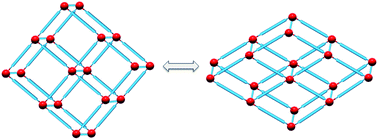
Faraday Discuss., 2021,225, 442-454
https://doi.org/10.1039/D0FD90035D
Multi-stimulus linear negative expansion of a breathing M(O2CR)4-node MOF
Quartz-type MOF (Me2NH2)2[Cd(NO2BDC)2] (SHF-81) exhibits anisotropic breathing behaviour as single crystals in response to multiple stimuli.
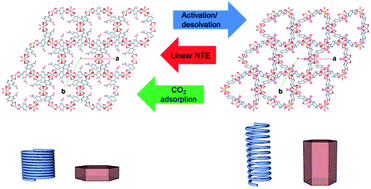
Faraday Discuss., 2021,225, 133-151
https://doi.org/10.1039/D0FD00089B
The state of the field: from inception to commercialization of metal–organic frameworks
We provide a brief overview of the state of the MOF field from their inception to their synthesis, potential applications, and finally, to their commercialization.
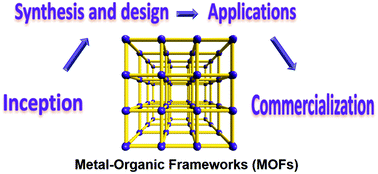
Faraday Discuss., 2021,225, 9-69
https://doi.org/10.1039/D0FD00103A
Inclusion of viologen cations leads to switchable metal–organic frameworks
A series of anionic zinc-based MOFs have been prepared and electron transfer reactions involving the viologen counter-cations studied.

Faraday Discuss., 2021,225, 414-430
https://doi.org/10.1039/C9FD00137A
Trends in the thermal stability of two-dimensional covalent organic frameworks
Here, we study the thermal stability of ten 2D covalent organic frameworks using a combination of variable-temperature X-ray diffraction, thermogravimetric analysis, diffuse reflectance infrared spectroscopy, and density-functional theory.
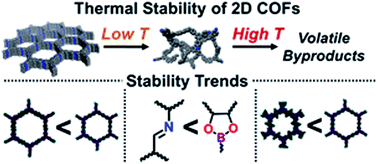
Faraday Discuss., 2021,225, 226-240
https://doi.org/10.1039/D0FD00054J
Influence of flexible side-chains on the breathing phase transition of pillared layer MOFs: a force field investigation
MOF-FF was fitted for flexible linkers and used to investigate the breathing phase transition of MOFs with flexible side-chains.

Faraday Discuss., 2021,225, 324-340
https://doi.org/10.1039/D0FD00017E
The role of temperature and adsorbate on negative gas adsorption transitions of the mesoporous metal–organic framework DUT-49
Adsorption-induced contraction and negative gas adsorption in the mesoporous metal–organic framework DUT-49 for different gases and temperatures.
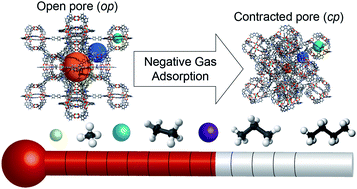
Faraday Discuss., 2021,225, 168-183
https://doi.org/10.1039/D0FD00013B
Exploring the dynamics of Zr-based metal–organic frameworks containing mechanically interlocked molecular shuttles
MOFs UiO-68 and PCN-57, containing triphenylene linkers, were doped with a tetracarboxylate linker that contains a [2]rotaxane molecular shuttle, and VT CP MAS 13C SSNMR was used to explore the motion of the macrocyclic ring inside the cavities.
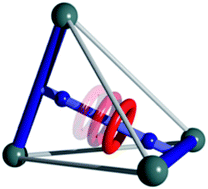
Faraday Discuss., 2021,225, 358-370
https://doi.org/10.1039/D0FD00004C
Cooperative phenomenon of vapochromism and proton conduction of luminescent Pt(II) complexes for the visualisation of proton conductivity
The cooperative phenomenon between proton conduction and vapochromism of luminescent Pt(II) complexes, [PtCl(tpypy)]Cl and [PtCl(tpypyH)]Cl2, is reported.
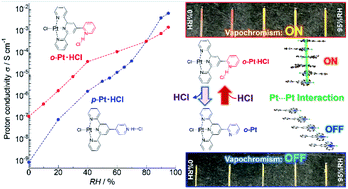
Faraday Discuss., 2021,225, 184-196
https://doi.org/10.1039/D0FD00001A
Adsorber heat exchanger using Al-fumarate beads for heat-pump applications – a transport study
This paper describes the cost-efficient and scalable synthesis and shaping processes of Al(OH)-fumarate beads of various sizes appropriate for use in water Adsorption Heat-Pumps (AHPs).
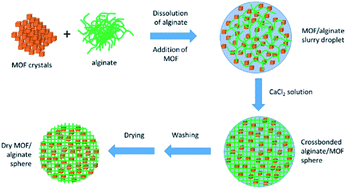
Faraday Discuss., 2021,225, 384-402
https://doi.org/10.1039/D0FD00009D
Face-selective adsorption of a prochiral compound on the chiral pore-surface of a metal–macrocycle framework (MMF) directed towards stereoselective reactions
The chiral pore-surface of a porous metal–macrocycle framework face-selectively adsorbs a prochiral molecule with the aid of a supramolecular chiral auxiliary.
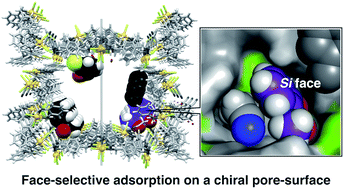
Faraday Discuss., 2021,225, 197-209
https://doi.org/10.1039/D0FD00019A
Crystal melting and vitrification behaviors of a three-dimensional nitrile-based metal–organic framework
A 3D porous MOF containing a tripodal nitrile ligand was found to show crystal melting at 271 °C and vitrification.

Faraday Discuss., 2021,225, 403-413
https://doi.org/10.1039/D0FD00003E
Function from configurational degeneracy in disordered framework materials
We develop the concepts of combinatorial mechanics, adaptive flexibility, and error-correcting codes as applications of disordered framework materials.

Faraday Discuss., 2021,225, 241-254
https://doi.org/10.1039/D0FD00008F
Exploring cooperative porosity in organic cage crystals using in situ diffraction and molecular simulations
A porous organic cage crystal, α-CC2, shows unexpected adsorption of sulphur hexafluoride (SF6) in its cage cavities, which was investigated and rationalized using in situ diffraction and molecular simulations.
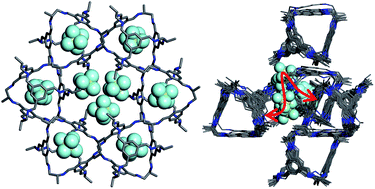
Faraday Discuss., 2021,225, 100-117
https://doi.org/10.1039/D0FD00022A
Atomistic insight in the flexibility and heat transport properties of the stimuli-responsive metal–organic framework MIL-53(Al) for water-adsorption applications using molecular simulations
Insight into the heat transport and water-adsorption properties of the flexible MIL-53(Al) is obtained using advanced molecular dynamics simulations.
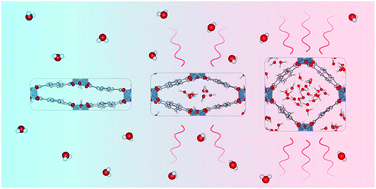
Faraday Discuss., 2021,225, 301-323
https://doi.org/10.1039/D0FD00025F
Photoelectrochemical alcohol oxidation by mixed-linker metal–organic frameworks
This work showcases the first instance of cooperative photoelectrochemical oxidation within a chromophore/catalyst-incorporated metal–organic framework.
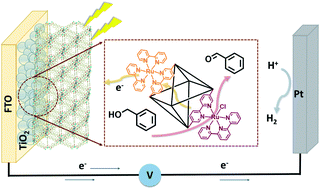
Faraday Discuss., 2021,225, 371-383
https://doi.org/10.1039/D0FD00021C
Can 3D electron diffraction provide accurate atomic structures of metal–organic frameworks?
Structure determination by continuous rotation electron diffraction can be as feasible and accurate as single crystal X-ray diffraction without the need for large crystals.
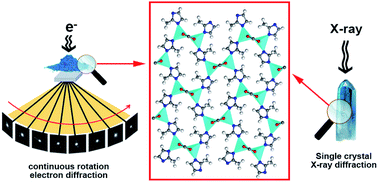
Faraday Discuss., 2021,225, 118-132
https://doi.org/10.1039/D0FD00015A
Cooperative and synchronized rotation in motorized porous frameworks: impact on local and global transport properties of confined fluids
Simulations reveal the influence of rotating molecular motors and the importance of orientation and directionality for altering the transport properties of fluids. This has outlined that motors with specific rotation can generate directed diffusion.
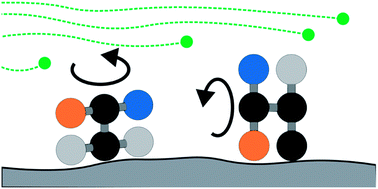
Faraday Discuss., 2021,225, 286-300
https://doi.org/10.1039/D0FD00016G
Identifying the liquid and glassy states of coordination polymers and metal–organic frameworks
Melting, glass formation, amorphisation and crystallisation were confirmed in coordination polymers and metal–organic frameworks by differential scanning calorimetry.

Faraday Discuss., 2021,225, 210-225
https://doi.org/10.1039/D0FD00011F
MOF matrix isolation: cooperative conformational mobility enables reliable single crystal transformations
Preordering of the linker site and utilising framework flexibility are critical to achieving high levels of metal loading during post-synthetic metalation.
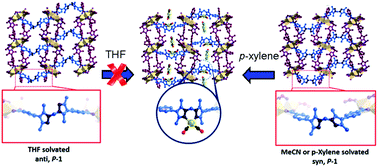
Faraday Discuss., 2021,225, 84-99
https://doi.org/10.1039/D0FD00012D
Molecular motion in the nanospace of MOFs upon gas adsorption investigated by in situ Raman spectroscopy
Molecular motions taking place in the nanospace of metal–organic frameworks (MOFs) are an interesting research subject, although not yet fully investigated.
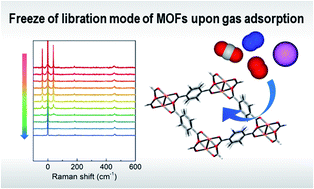
Faraday Discuss., 2021,225, 70-83
https://doi.org/10.1039/D0FD00002G
The micromechanical model to computationally investigate cooperative and correlated phenomena in metal–organic frameworks
Through the here introduced micromechanical equations of state, long-range dynamic phenomena in MOFs can be investigated starting from atomistic information.
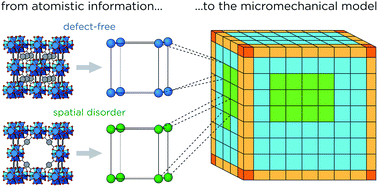
Faraday Discuss., 2021,225, 271-285
https://doi.org/10.1039/C9FD00148D
Advanced characterisation techniques: multi-scale, in situ, and time-resolved: general discussion
Faraday Discuss., 2021,225, 152-167
https://doi.org/10.1039/D0FD90032J
Novel computational tools: general discussion
Faraday Discuss., 2021,225, 341-357
https://doi.org/10.1039/D0FD90034F
Towards complex systems and devices: general discussion
Faraday Discuss., 2021,225, 431-441
https://doi.org/10.1039/D0FD90036B
Materials breaking the rules: general discussion
Faraday Discuss., 2021,225, 255-270
https://doi.org/10.1039/D0FD90033H
About this collection
We are delighted to share with you a selection of the papers associated with a Faraday Discussion on Cooperative phenomena. More information about the event may be found here: http://rsc.li/framework-fd2020. Additional articles will be added to the collection as they are published. The final versions of all the articles presented and a record of the live discussions will be published after the event.
There has been exponential growth in the number of nanoporous framework materials reported in the scientific literature over recent years, with thousands of new metal–organic frameworks (MOFs), covalent organic frameworks (COFs), molecular framework materials, inorganic framework materials, and supramolecular frameworks. These novel families of materials open up new horizons in practically all branches of engineering, physics, chemistry, biology, and medicine.
This topic combines both fundamental and applied aspects. The Faraday Discussion format, with its unique focus on open and spirited discussion between key players, will give the community an unparalleled opportunity to identify the open questions and challenges in the field, which is still being shaped as it grows, as well as the best ways to address them.